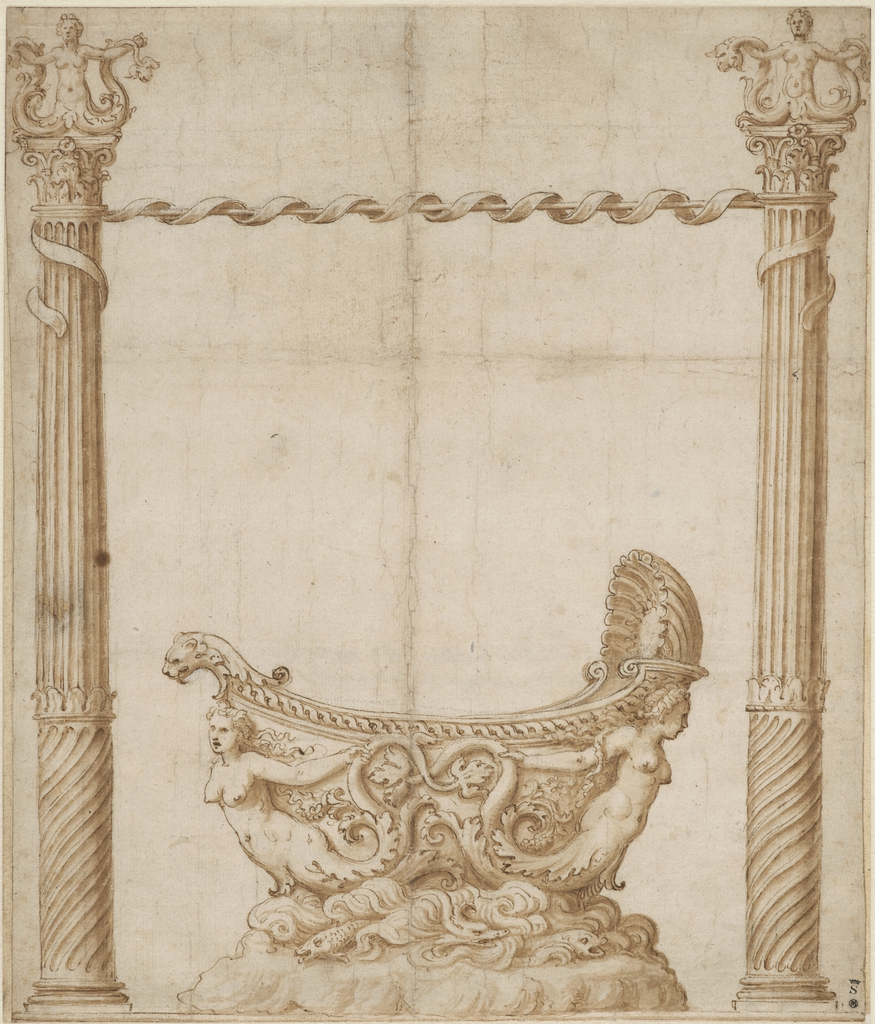As the artist for the ducal court at Mantua in the early sixteenth century, Giulio Romano designed everything from architecture and stage sets to fresco programs and metalwork. But the purpose of this drawing remains a mystery. It features a vessel in the shape of a ship, supported by two mermaids, who rise up from a base that represents the waves of the sea. Two tall columns, featuring smaller mermaids atop their capitals, flank the ship. A pole around which a ribbon is wound connects the columns.
This ink and chalk design is clear enough to have been translated into various media, including metalwork and carved wood. Aquatic themes were frequently incorporated into saltcellars, a clever reference to salt’s origins in the sea. But the designs for the columns would have made access to the saltcellar challenging. Symbolic motifs suggest yet another possibility. The double-tailed mermaid is associated with the Emperor Charles V, giving credence to the theory that the design might have been made as part of the festival decorations for a banquet given by the Gonzagas in honor of the emperor in 1530. Yet another theory suggests that the design is for a dynastic cradle, possibly designed to celebrate the birth of the enfant Francesco III Gonzaga, born in 1533. Prominent families throughout Italy often followed the tradition of publically presenting an heir in an ornate cradle under a fabric canopy. Since Romano was so prolific, it has proved difficult to use his identified designs as definitive clues as to the design intentions of this intriguing drawing.
This drawing will be on view in the Hewitt Sisters Collect exhibition beginning December 12, 2014.
Caitlin Condell is the Curatorial Assistant for Drawings, Prints & Graphic Design at Cooper Hewitt, Smithsonian Design Museum.
